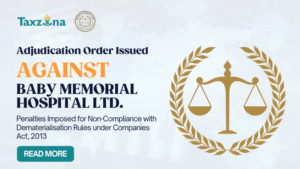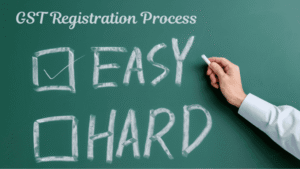The financial records you keep are crucial if you want to know how your company is doing. It’s also crucial for fulfilling a variety of legal responsibilities, including filing of Income tax returns or Filing GST Returns. It’s for this reason that precision is crucial.
Accounting errors are unfortunately possible with either a cloud-based or local solution. It’s crucial to think about the worst-case scenarios and how they can affect your company. What’s more, you need to know how to fix accounting mistakes and prevent them from happening again.
How Prevalent are Different Categories of Accounting Mistakes, and What Causes Them?
Your accounting system’s accuracy is only as good as the information you enter. The correct account must be used, the proper description or code must be applied, and the correct amount must be entered.
Inaccuracies in the books can be the consequence of human error or from a failure to fully grasp accounting services principles. The following are some common sorts of errors that can be found in financial statements and why they should be investigated.
Data Entry Errors
Errors in data entry occur when information is entered incorrectly or not entered at all into your bookkeeping software. Mistakes in data entry frequently made by users include:
- Passing Entry into the incorrect account or Ledger.
- Altering one set of numbers to correspond to another.
- Subtracting or adding a digit or a decimal point.
- mistakenly omitting or duplicating a record.
- misclassifying costs as revenues or incomes.
Error of Omission
To put it simply, this is an item that was forgotten to be recorded. It’s not on purpose; people simply miss it. If you pay an invoice but forget to record that you did so, there’s an example. The same goes if you buy a tablet but forget to log it as an expense.
Easily avoidable, this is what happens when essential paperwork like an invoice or receipt goes missing. {Pro Tip: What Is Business Accounting? 21 Tips For Business Owners}
Error of Commission
Incorrectly storing something is an example of carelessness. Although the total and general ledger account are correct, the sub-account you’ve chosen is wrong. One common scenario is applying payment received for one customer’s invoice to another customer’s bill.
For accounting purposes, your total payments add up correctly, but the individual customer information is incorrect.
Error of Transposition
Reversing numbers in a record leads to an inaccurate value being recorded for a product. Transposing a number has the potential to either overstate or understate the value of an item. For instance, you incorrectly enter Rs. 496 for a cost that should have been Rs. 946. As a result, we have Rs. 450. If this is a deductible amount that was not claimed due to the entry error, it might be rather expensive.
Compensating Eerror
This mistake is actually a combination of two separate ones; one cancels out the other. The lack of an overall impact makes it challenging to identify. If, for any reason, you exaggerate income by Rs. 1,000 but understate expenses by the same amount, the two errors cancel each other out.
Error of Duplication
This happens when you make multiple entries for the same source of income or expense. When multiple people have access to the books and make the identical entry, for instance, this kind of mistake is possible.
Error of Principle
A non-GAAP item was recorded, which is an error (GAAP). If a transaction is recorded in the incorrect ledger, this is the most common result. The sum is right; it was just keyed in incorrectly. Errors of principle are among the most consequential types of procedural errors. The most typical case of a violation of principle is when a business owner uses company funds to cover a private expenditure.
Error of Entry Reversal
That’s what happens when you pretend a cost is a revenue item, or vice versa. You made a mistake and recorded a Rs. 250 invoice as an expense instead of a revenue item in your books (i.e., you record it as an expense).
How Can Accounting Errors Affect Your Business?
Minor and major accounting mistakes also exist. The repercussions of either are not to be taken lightly:
- Inaccurately reported earnings. Errors in reporting costs might skew operating profit margin calculations or lead to overstated revenue figures.
- Unreliable forecast of future financial flows. Cash on hand for bill payment can be over- or underestimated if missing data is presented.
- Errors in recording costs. It is possible to fail to submit a deductible item due to improper classification or omission of the expense. Overpaying taxes is a possible outcome.
- Cost of labour has gone up. Employees who are already swamped with year-end reporting have a harder time focusing on other tasks when they have to correct classification mistakes made in the past.
- Fines for late payments. Invoices may be overdue, incur late penalties and interest, and be misclassified if the mistake isn’t caught until later in the accounting cycle.
- Expenses not proportional to income. Companies adopting accrual accounting could submit inaccurate reports if costs are misclassified. It’s important to balance your spending with the money you bring in. This will not occur as planned if costs are assigned to the wrong calendar period.
- Spotting instances of deception. Unfortunately, embezzlement and other forms of employee fraud are a reality for any company. Mismatched components may signal the presence of an issue that necessitates further examination if left unchecked.
How Can You Prevent Accounting Errors?
First and foremost, being cautious when handling financial data is essential for effectively categorizing and recording transactions. Here are a few tips to help you keep accurate books.
1. Train staff on Data Entry Accuracy
Expenses should be entered into the accounting system by staff members who have a firm grasp of the accounts and descriptions used. Don’t rush through the explanation of your methodology. Take use of any programme that includes employee training features.
Establish standard operating procedures for record keeping to ensure that all company transactions are recorded accurately. If you want to be sure your statistics are right, you should keep track of things like employee reimbursements only after they’ve submitted their expense reports.
Also, make sure there’s someone available to answer any inquiries about accounting entries.
2. Don't Overload Your Employees
When workers are pressed for time, they are more likely to make careless mistakes in data entry than when they have plenty of breathing room. However, it’s crucial that you avoid falling behind in your bookkeeping and keep everything up to date.
Using expense report software that can automatically feed spending information into your accounting software is one approach to streamline your data input process and reduce the likelihood of human error.
3. Utilize the Newest Accounting Software
Ensure that you are running the most recent version of your bookkeeping software. Constant updates to accounting software and cloud services aim to cut down on repetitive tasks and increase efficiency.
While cloud-based systems receive updates automatically, desktop software must be updated with a new purchase every few years.
4. Implement Internal Controls
Establish procedures that will aid in finding and fixing accounting mistakes. Bank reconciliations should be performed on a monthly basis to ensure any discrepancies are identified and corrected before they do irreparable damage to the company’s financial records.
Financial documents in the same vein include credit card statements. In order to be sure that all of your charges have been properly recorded, you should review them once a month.
5. Compare Planned Costs With Those Incurred
Get your finances on the correct track with the help of your accounting system. A discrepancy between the budgeted amount and the actual amount spent on a certain item or activity is possible. It is possible to find a misclassification by comparing actual expenses to planned ones (or at least an explanation for the differences).
6. Have Your Books Checked by a Pro on a Regular Basis?
It’s a good idea to have your accountant check your books on a regular basis to make sure they accurately reflect your business’s spending and GAAP. It’s possible that your accounting software has a function that lets your accountant evaluate client information with no effort on their part.
7. Adopt Best Accounting Practices and Standards
Employees shouldn’t be allowed to put off work. It is important to establish data entry and reconciliation deadlines so that mistakes can be spotted and fixed promptly.
To ensure that your accounting system is up to par, you should familiarize yourself with accounting standards. U.S.-based private businesses often follow GAAP as their accounting standard. This establishes the schedule for submitting financial reports. There must be consistency between these criteria and your accounting system.
Mitigating Accounting Errors
It may be possible to correct a bookkeeping mistake by adding or deleting an entry. A corporation, for instance, did not record a Rs. 500 payment made to an independent contractor. Simply updating the relevant entry will rectify the situation.
Filing a request for a change in accounting method may be necessary if a reclassification of an expense results in a different accounting method for tax reasons. Consequences of such mistakes may be widespread (e.g., you may need to restate previous financial statements).
Consulting with professionals who can check your books and make sure everything is in order is a good idea if you’ve had or are expecting misclassification issues.
Read More: Avoid These Common Mistakes In Writing Books Of Accounts








